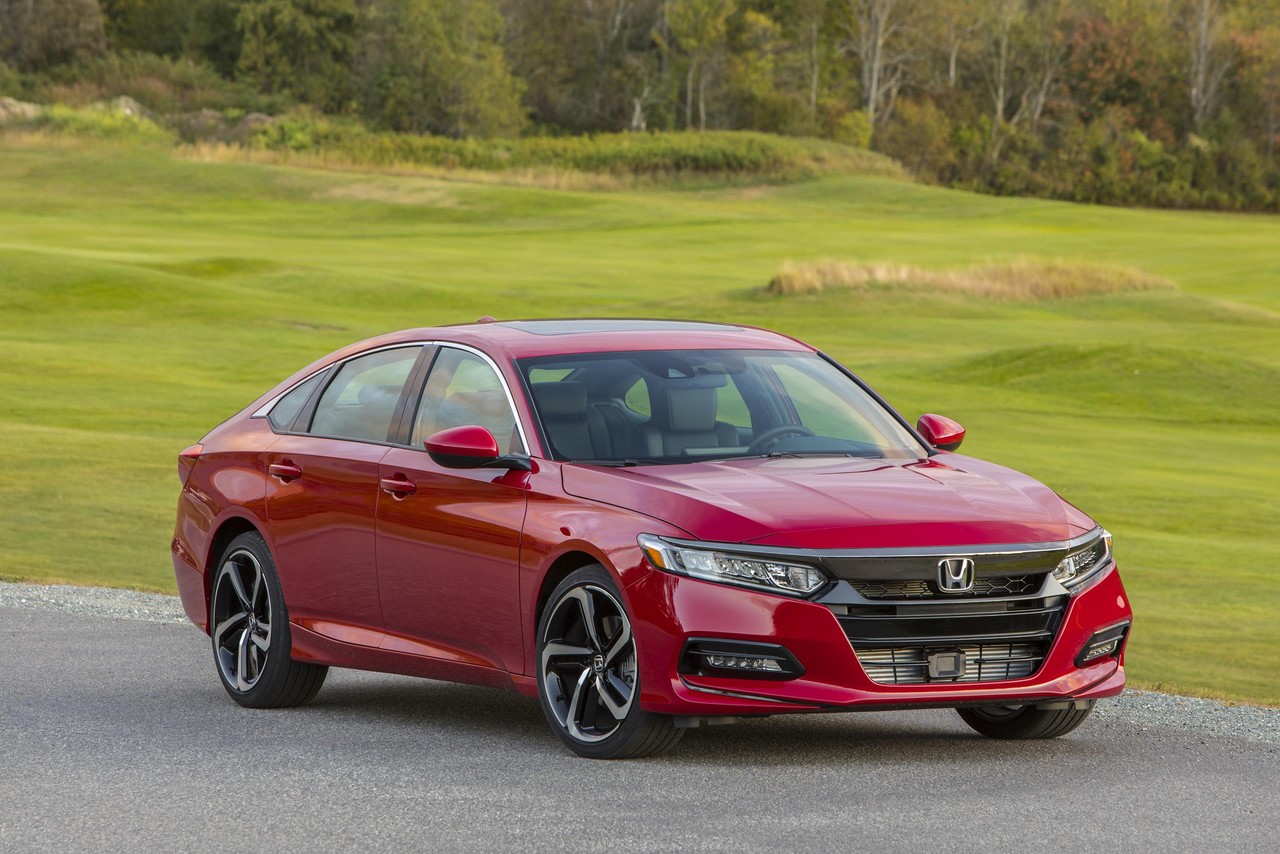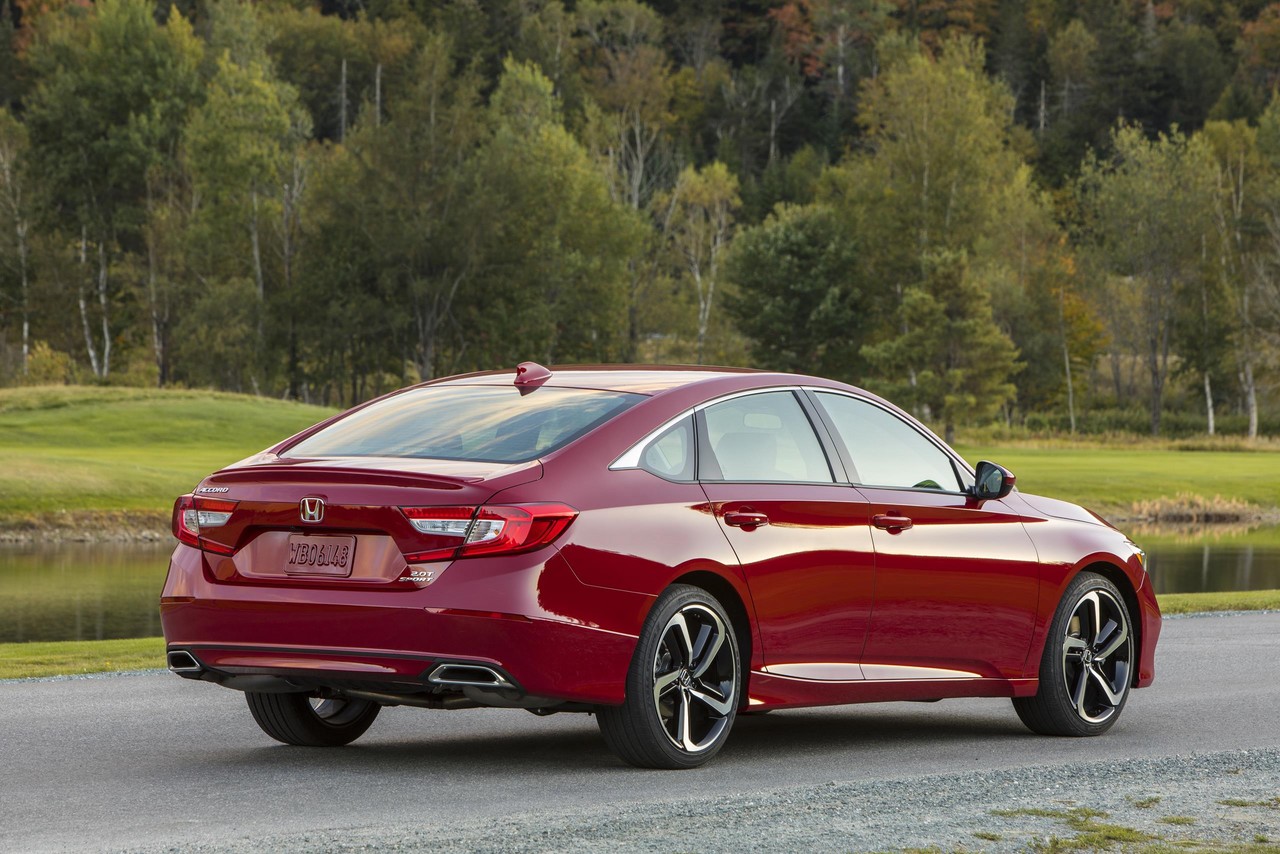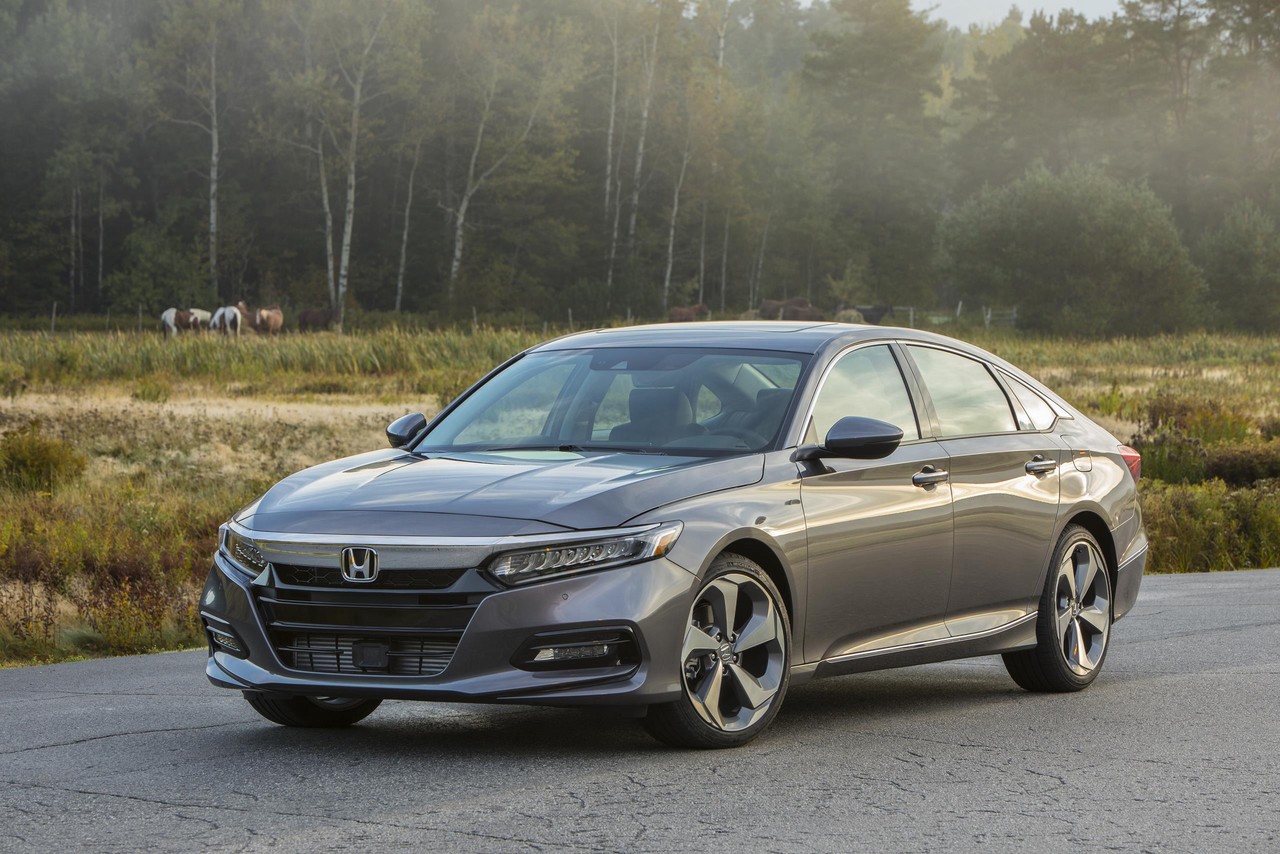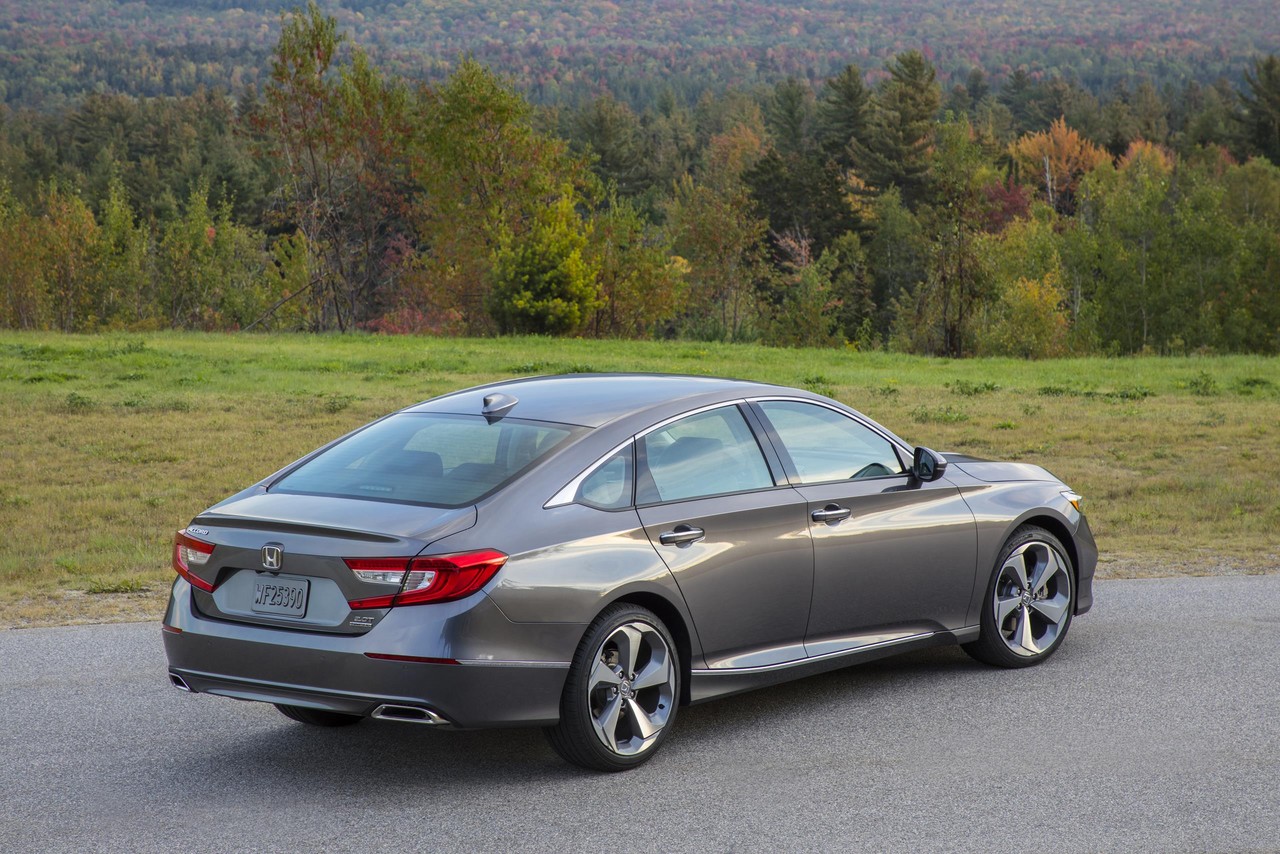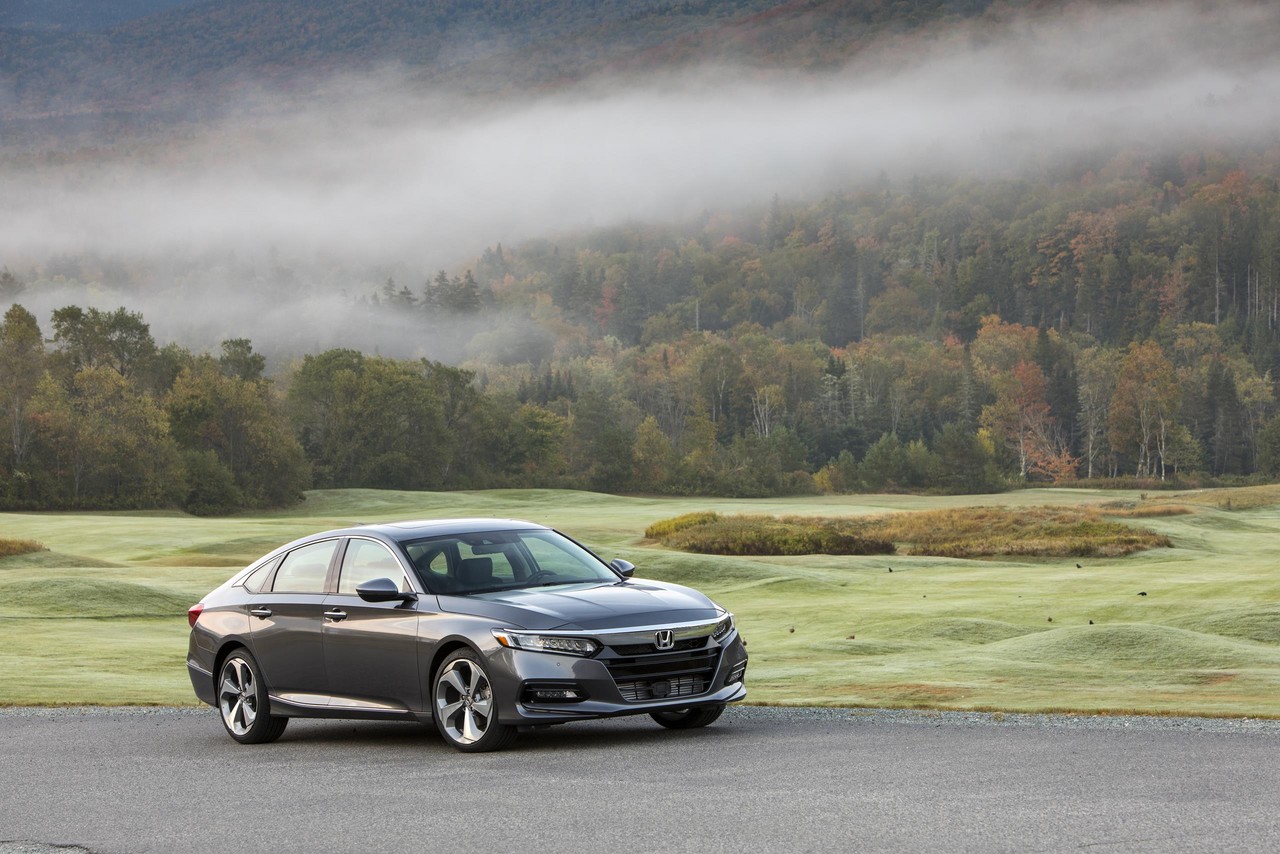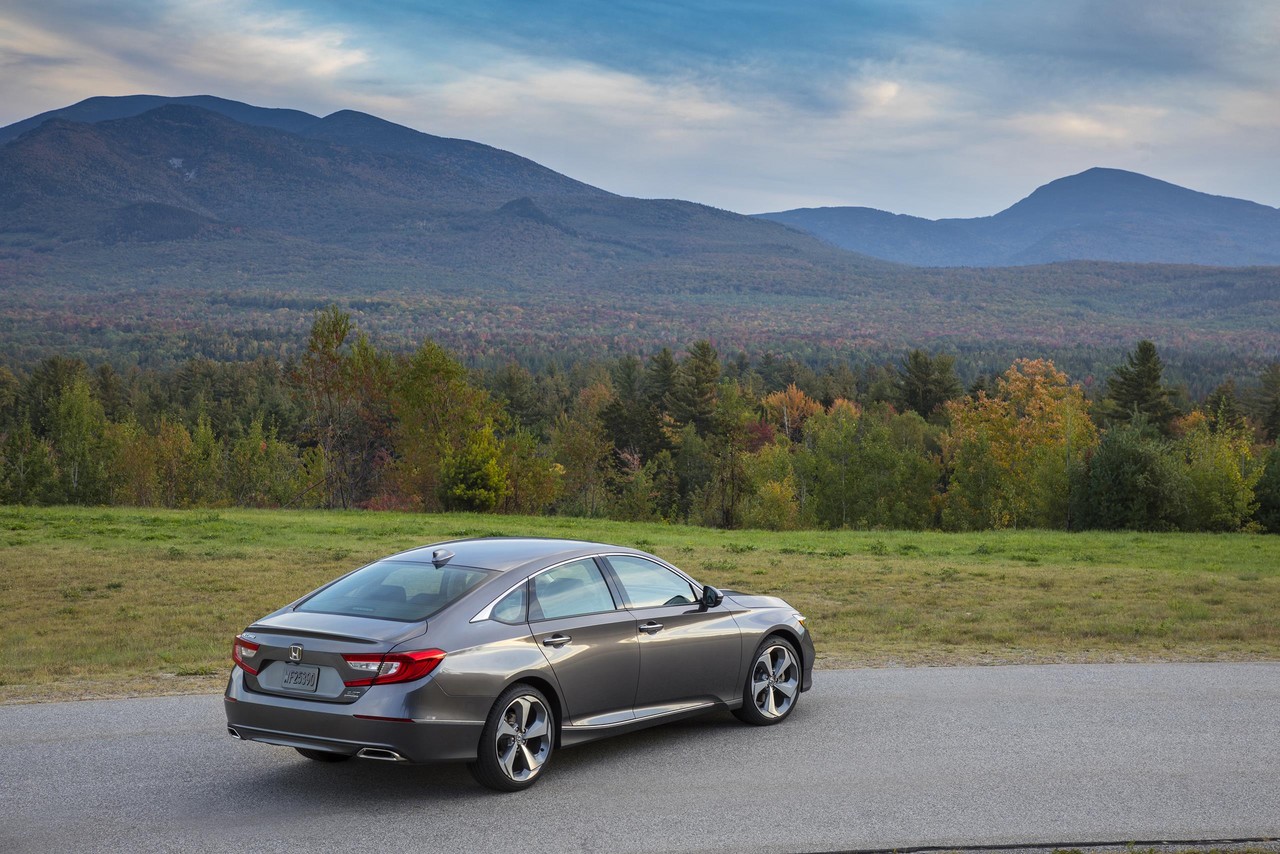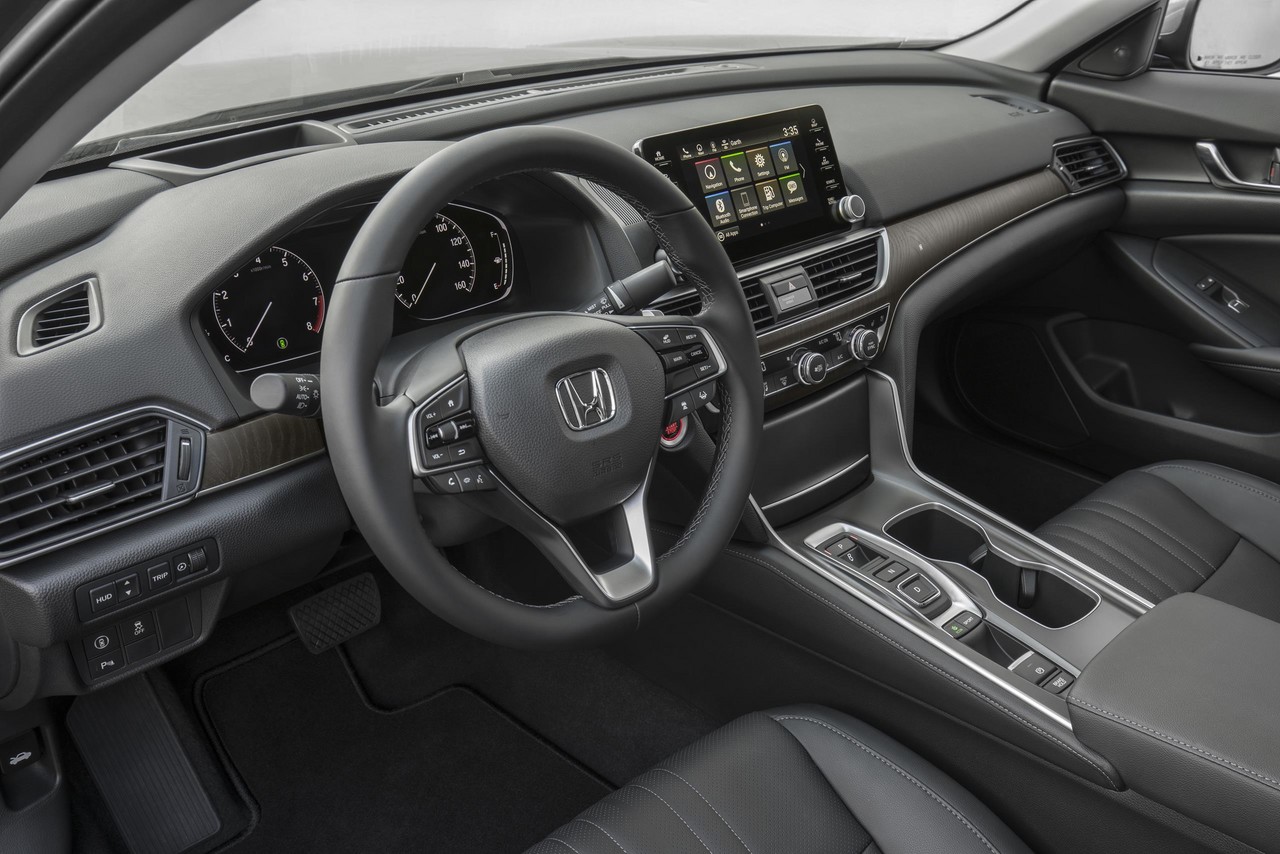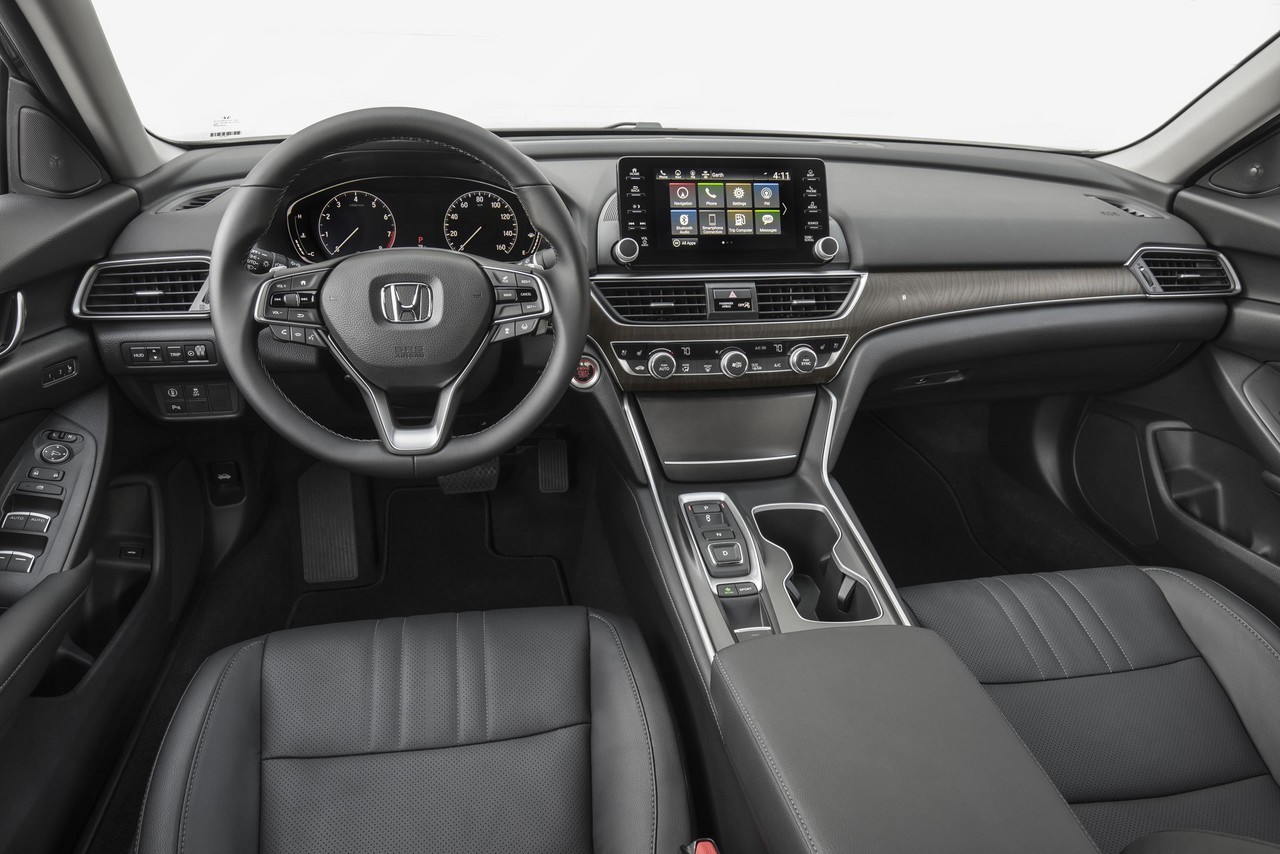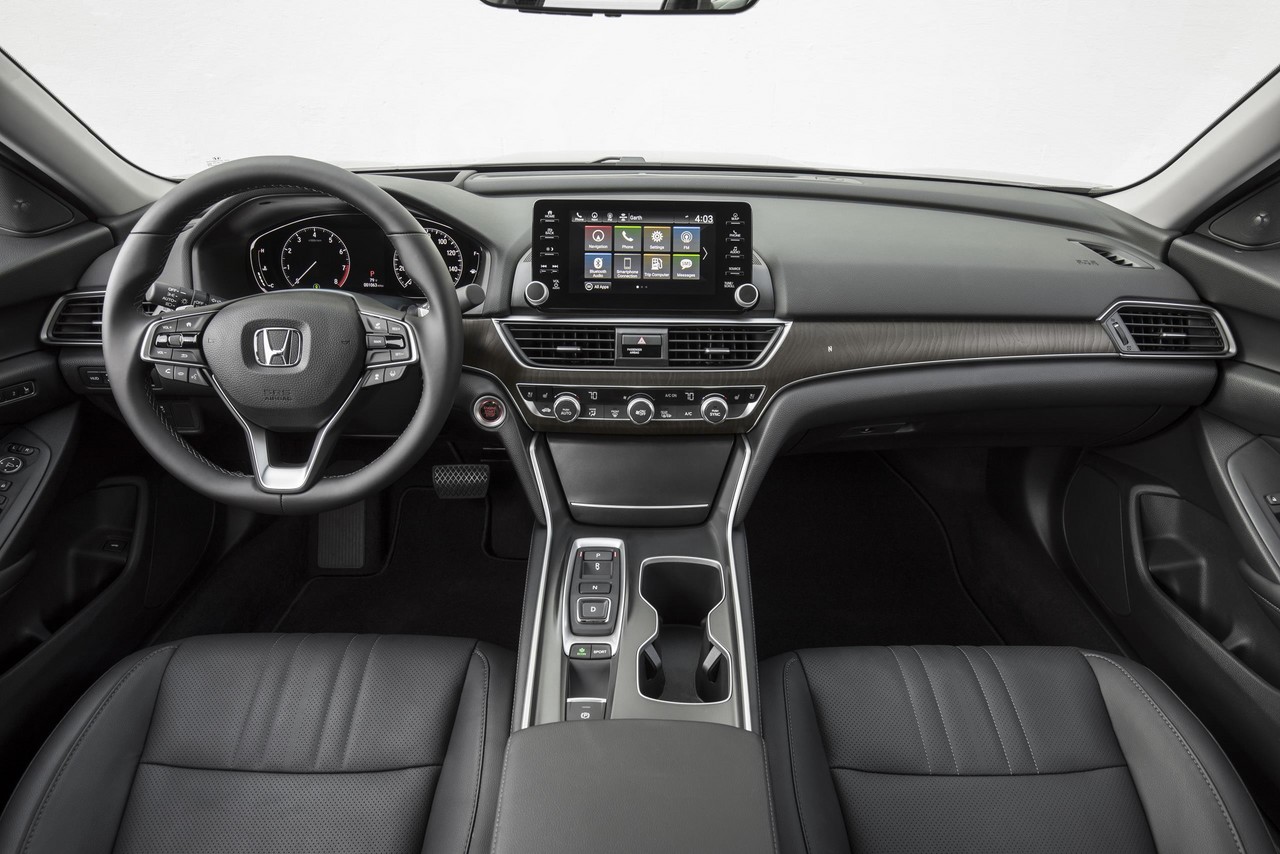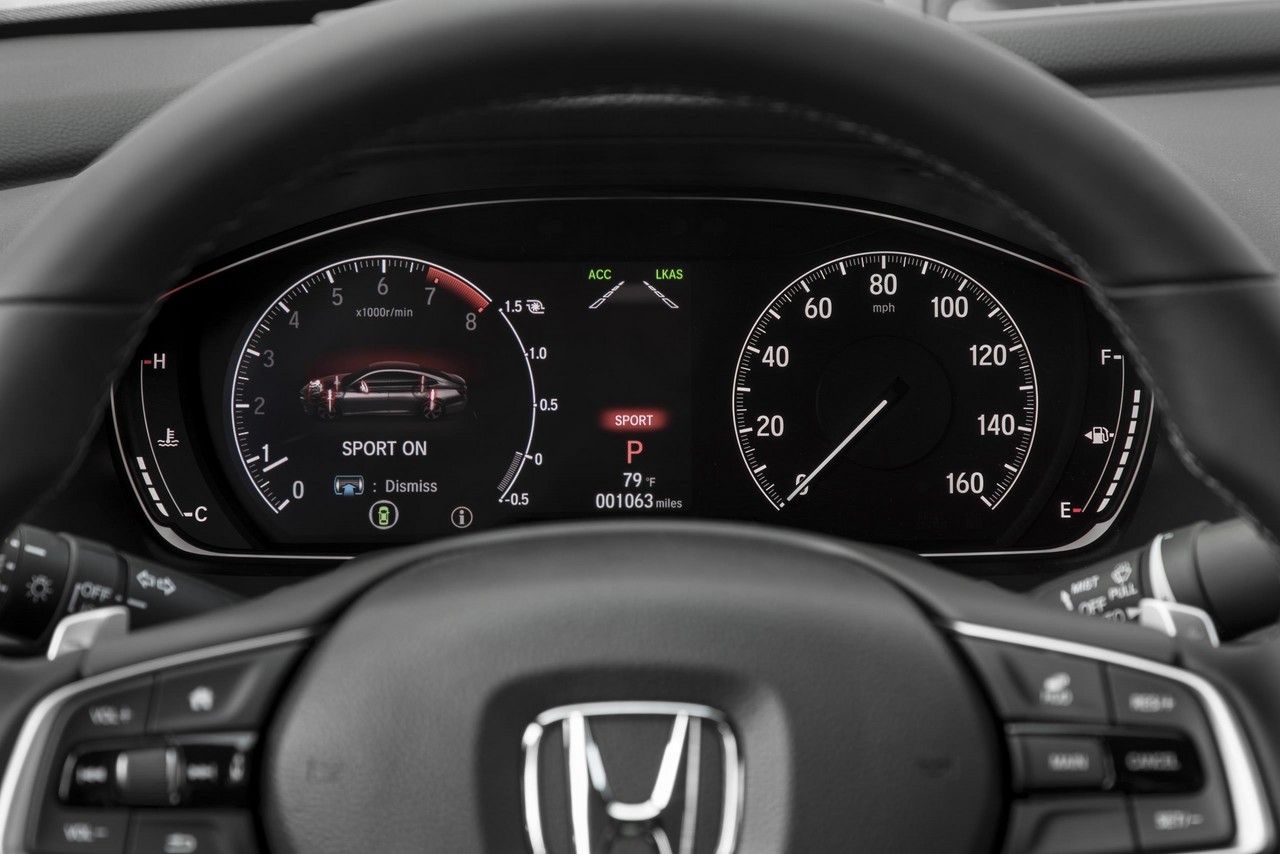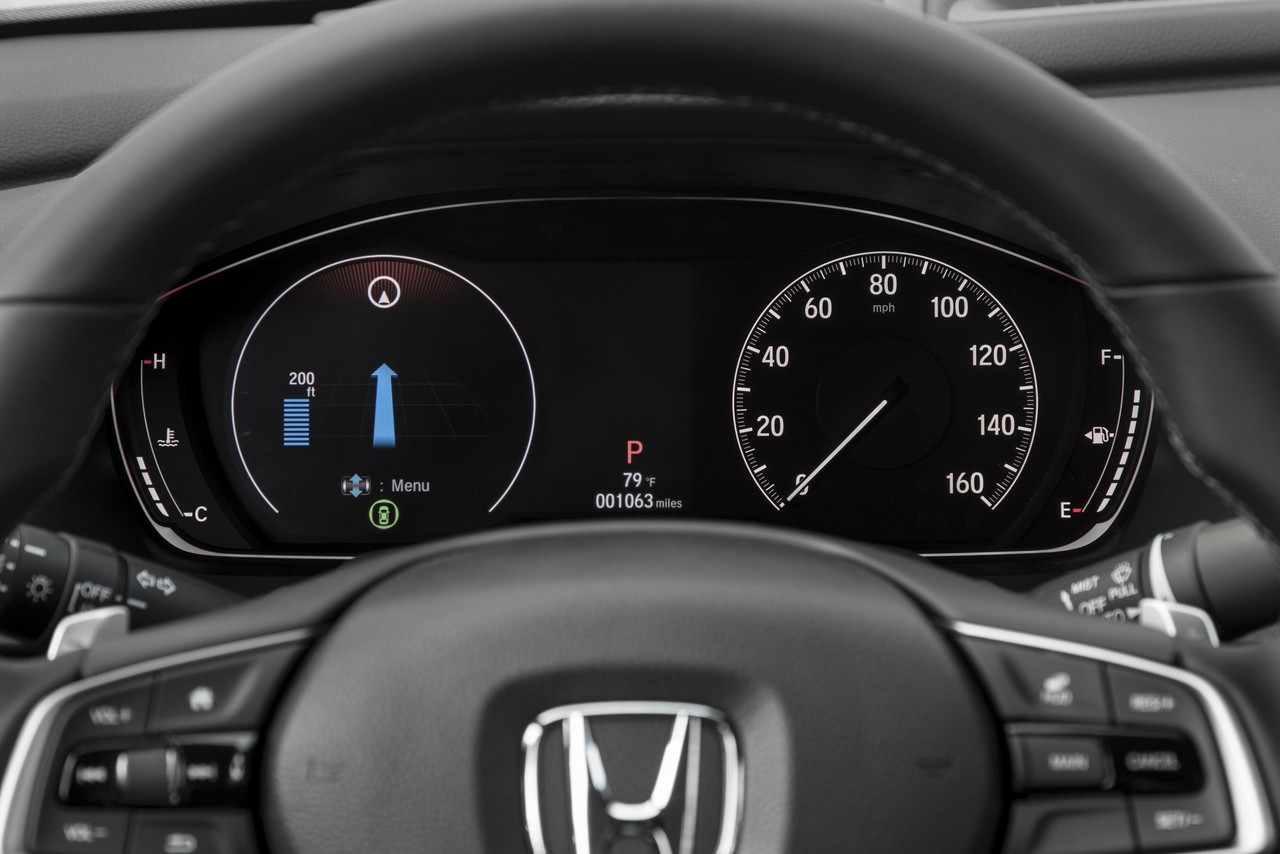
- Economical hybrid powertrain
- Accomplished ride/handling balance
- Quiet, well-insulated cabin
- Stronger chassis
- Improved rear seat legroom…
- … but poor rear headroom
- Adequacy of 1.5-litre turbo engine?
- Rear blind spots
Overview
Released in Australia in December 2019, the tenth-generation Honda Accord was a mid-sized sedan. Manufactured in Ayutthaya, Thailand, the tenth-generation Honda Accord range consisted of –
- The CV1 Accord VTEC Turbo which was powered by a 1.5-litre turbocharged petrol engine; and,
- The CV3 Accord Hybrid which was powered by a 2.0-litre Atkinson cycle petrol engine and two electric motors.
Both models were offered in VTi-LX variants and further details of the powertrains are provided below. Upon their release, the Accord VTEC Turbo and Accord Hybrid had manufacturer list prices of $47,990 and $50,490, respectively.
CV1 Accord: 1.5 VTEC Turbo
The CV1 Accord was powered by Honda’s 1.5 VTEC Turbo (L15BG) engine, similar to that used in the Honda FC1 Civic Sedan , Honda FK4 Civic Hatch and Honda RW CR-V . This engine featured an aluminium alloy cylinder block, a steel crankshaft, forged steel connecting rods, a low-pressure die-cast aluminium alloy cylinder head which had an integrated four-into-two exhaust manifold (i.e. cast directly into the cylinder head), a mono-scroll turbocharger with electric wastegate, dual overhead camshafts (thin-wall, hollow type) that were driven by a ‘silent’ chain, four valves per cylinder (including sodium-filled exhaust valves), direct injection and a compression ratio of 10.3:1. The L15BG engine also had:
- Honda’s Dual Variable Timing Control (dual VTC) which adjusted intake and exhaust camshaft phase; and,
- Honda’s ‘Variable Valve Timing and Lift Electronic Control’ (VTEC) which adjusted valve lift, timing and duration of the exhaust valves.
CV3 Accord: Hybrid
The Honda CV3 Accord Hybrid had –
- A 2.0-litre Atkinson cycle petrol engine;
- A permanent magnet electric propulsion motor; and,
- A permanent magnet electric motor which acted as a generator/starter.
According to Honda, the electric motors were the first in the world not to contain heavy rare-earth metals. Furthermore, the lithium-ion battery pack for the electric motors was mounted under the rear floor.
The Honda CV3 Accord Hybrid had three drive modes:
- EV Drive: only used the electric motor. EV Drive was used when starting from rest, during light cruising and acceleration, and when braking. Furthermore, the petrol engine was decoupled from the drivetrain to reduce friction;
- Hybrid Drive: used the electric motor to drive the front wheels, while the petrol engine powered the electric-generator motor to charge the lithium-ion batteries. In this mode, the system worked as a ‘series hybrid’; and,
- Engine Drive: when cruising at medium to high speeds, the petrol engine drove the front wheels via a high capacity lock-up clutch which connected the generator motor and the electric drive motor. In this mode, the system worked as a ‘parallel hybrid’ where the petrol engine and, when required, the electric propulsion drive motor, both provided power to the wheels.
Depending on the state of battery charge and other parameters, the petrol engine could automatically shut off 1) during acceleration, 2) when the vehicle was at rest or 3) when the vehicle was operating under battery power. When needed, the petrol engine would restart automatically without action from the driver.
The 2.0-litre Atkinson cycle petrol engine had an aluminium alloy cylinder block and head, a forged-steel crankshaft which had micro-polished journals to reduce friction, counter-rotating balance shafts to reduce second order harmonic vibrations, a 6.0 mm offset for the cylinder bores to reduce piston friction, cast-in iron cylinder liners, double overhead camshafts, four valves per cylinder, a 34 degree included angle between the intake and exhaust valves, port fuel injection, a compression ratio of 13.5:1 and a thermal efficiency of 40 per cent. The engine also featured:
- Honda’s i-VTEC (Variable Valve Timing and Lift Electronic control) which adjusted lift profile, timing and duration of the intake valves; and,
- Electric Valve Timing Control (Electric VTC) which continuously adjusted the intake camshaft phase.
| Variant | Engine | Trans. | Peak power | Peak torque |
|---|---|---|---|---|
| CV1 Accord VTEC Turbo | 1498 cc L15BG turbo petrol I4 | CVT | 140 kW at 5500 rpm | 260 Nm at 1600-5000 rpm |
| CV3 Accord Hybrid | 1993 cc LFB1 petrol I4 | Direct drive | 107 Nm at 6200 rpm | 175 Nm at 3500 rpm |
| Electric propulsion motor | 135 kW at 5000-6000 rpm | 315 Nm at 0-2000 rpm | ||
| Combined | 158 kW | N/A | ||
Dimensions and body
Compared to the ninth-generation Honda CR2/CR3 Accord , the tenth-generation CV1/CV3 Accord was 19 mm longer (at 4904 mm), 12 mm wider (1862 mm), 15 mm lower (1450 mm) and had a 55 mm longer wheelbase (2830 mm); boot capacity was 570 litres (VDA standard). The CV3 Accord Hybrid and CV1 Accord VTEC Turbo had kerb weights of 1591 kg and 1504 kg, respectively. Furthermore, the CV3 Accord Hybrid had a 60:40 front:rear weight distribution, while the CV1 Accord VTEC Turbo had a 61:39 weight distribution.
The body of the Honda CV1/CV3 Accord had the following attributes –
- 29 per cent of the body consisted of super high-strength steel (i.e. 980-1500 MPa);
- 21 per cent of the body consisted of advanced high-strength steel (i.e. 590-780 MPa), including the floor pan;
- Structural adhesives were used in a first for Honda Accord models;
- The front of the vehicle had a cross-car brace;
- A laser brazing process was used for a narrower junction between the roof panel and upper door rings;
- Honda’s ‘Advanced Compatibility Engineering’ (ACE) front body structure had a crash stroke front frame (i.e. a link structure in the front subframe under the engine to absorb crash energy);
- The rear impact structures had ‘Softzone’ technology (i.e. the rear frame members and centre pillars of the monocoque combine different material strengths within a single steel component to create specially tempered areas to absorb crash forces); and,
- The front roof pillars were 20 per cent narrower and moved rearward relative to the driver’s seating position.
Compared to the CR2/CR3 Accord , the body of the CV1/CV3 Accord achieved a 32 per cent increase in torsional rigidity, a 24 per cent increase in bending rigidity and a 12 per cent increase in floor bending rigidity.
The CV1/CV3 Accord also had the following noise reduction measures –
- Short-pitch welding was used to place spot welds at 20 mm spaces in critical areas of the body (compared to 40-45 mm in traditional spacing);
- In a first for Honda Accord models, acoustic spray foam was applied in the base of the A-, B- and C-pillars, as well as in the base of the windscreen frame and at the top of the C-pillars;
- Acoustic tape was applied at the base of the A-, B- and C-pillars, while a foam stopper was also used at the base of the B-pillar;
- Gussets were used inside the rear quarter areas of the body;
- Full underbody covers to reduce road noise;
- Front and rear bumper and engine compartment insulators;
- Alloy wheels with Honda-proprietary resonator technology, a resin moulding that was applied in a band on the inside of the rim and low-friction bearings for the wheel hubs;
- Acoustic laminated windscreen glass which used an outer layer of safety glass, a middle layer of acoustic polyvinyl butyral PVB and an inner layer of glass for a total thickness of 4.7 mm;
Front door acoustic glass (not standard across the range); - A three-microphone Active Noise Control System which emitted reverse phase audio signals via the vehicle’s sound system to offset low frequency noises; and,
- Sound-absorbing carpet.
Suspension
The Honda CV1/CV3 Accord had MacPherson strut front suspension with L-shaped aluminium lower arms that connected to an aluminium/steel sub-frame. Furthermore, the CV1/CV3 Accord had multi-link rear suspension that was mounted on a floating rear sub-frame. Fluid-filled compliance bushings were used for all four wheels, while the front and rear stabiliser bars had bonded bushings.
Steering
The Honda CV1/CV3 Accord had dual-pinion, variable-ratio electric power steering. The steering ratio had a final full off-centre ratio of 11.8:1 – this corresponded to 2.3 turns from lock-to-lock.
As standard, the CV1/CV3 Accord had:
- A ‘Straight Driving Assist’ function which reduced the steering effort required when driving on a sloped or crowned road. When Straight Driving Assist detected that steering effort was being applied to keep the car driving straight along a slope, the electric power assistance would be applied to reduce the muscle effort required to the same level as that required on a flat road; and,
- Agile Handling Assist (standard): applied braking force to the inside wheels when cornering at high lateral G to create a yaw moment, thereby generating more turning force and reducing understeer.
Safety equipment
Standard safety equipment for the Honda CV1/CV3 Accord included dual front airbags, front seat-mounted side airbags, full-length curtain airbags (i.e. for front and second row occupants), ABS, electronic brake force distribution, brake assist, electronic stability control, traction control and front seatbelts with pre-tensioners and load limiters.
As standard, the Honda CV1/CV3 was equipped following ‘Honda Sensing’ active safety technologies –
- Collision Mitigation Braking System (CMBS) with Forward Collision Warning (FCW): used a millimetre wave radar unit behind the front grille and a monocular camera between the rear-view mirror and windscreen to monitor the road ahead. When there was a risk of a collision with another vehicle or a pedestrian, the Forward Collision Warning (FCW) system provided visual and audible alerts. If the driver did not respond, CMBS could initiate autonomous braking to reduce vehicle speed;
- Lane Departure Warning (LDW): used the monocular camera to identify solid or dashed painted lane lines, Botts’ dots and cats eye markers. Operating at speeds above 72 km/h, LDW used the monocular camera to monitor vehicle position within its lane. If the vehicle departed from its lane without the turn signal having being activated, the driver would be alerted via a visual warning on the multi-information display and steering wheel vibrations;
- Lane Keeping Assist System (LKAS): operating at speeds above 72 km/h, LKAS used the camera to detect lane markings. If the vehicle was drifting within its lane, LKAS used the Electric Power Steering (EPS) system to provide corrective steering, thereby assisting the driver to maintaining their position within the lane;
- Road Departure Mitigation (RDM): operating at speeds above 72 km/h, RDM used steering force to assist the driver in keeping the vehicle in its lane. If the vehicle was detected leaving a lane marked by solid lines, braking force would be applied to keep the vehicle from departing the lane or roadway; and,
- Adaptive Cruise Control (ACC) with Low-Speed Follow (LSF): using a millimetre wave radar and monocular camera, ACC allowed the driver to set a desired speed and following interval from a vehicle ahead. Furthermore, the Low-Speed Follow function enabled the Honda Accord to brake until the vehicle was stationary and then accelerate as the road ahead cleared.
Beyond this, the CV1/CV3 Accord were also equipped with:
- Honda’s ‘LaneWatch’ blind spot monitoring system: used a camera positioned below the passenger-side door mirror to increase the view of the passenger-side mirror by up to 80 degrees, with the camera output visible on the multi-information display;
- Rear Cross Traffic Monitor: used the same radar sensors as BSI to detect approaching vehicles when the driver was reversing. If detected, the vehicle’s direction would be shown on the centre display’s rear camera image and an audible warning would be issued; and,
- Driver Attention Monitor: monitored driver behaviour to detect inattentiveness. The driver would first be alerted by a coffee cup icon and a four-level bar graph that is displayed on the Driver Information Interface (DII). As driver attention decreased, fewer bars would be illuminated. When the number of bars decreased to two, a message inviting the driver to take a break would be illuminated. If the driver continued driving and attentiveness decreased to one bar, a tone would sounds and the steering wheel would vibrate, prompting the driver to pay closer attention or take a rest break.
Features: Honda CV1/CV3 Accord VTi-LX
The infotainment system for the Honda CV1/CV3 Accord VTi-LX consisted of an eight-inch touchscreen, Garmin satellite navigation with SUNA live traffic updates, a 452 watt premium sound system with ten speaker (including subwoofer), digital radio tuner (DAB+), Apple CarPlay and Android Auto smartphone integration, a wireless charging pad (Qi standard), a 12 volt power outlet, a front USB port and two rear USB inputs.
Beyond this, standard features for the Honda Accord VTi-LX included 18-inch alloy wheels with 235/45 R18 tyres, leather-appointed seats, an twelve-way power adjustable driver’s seat, a four-way power adjustable front passenger seat, heated front seats, air conditioning, cruise control, directional LED headlights, LED daytime running lights, LED front fog lights, rain-sensing wipers, front and rear parking sensors, a surround view camera system (for front, side, rear and bird’s eye views), a head-up display (HUD), a leather-wrapped steering wheel and gearshift knob, 60:40 split-fold rear seats, remote central locking with proximity key, power adjustable door mirrors with automatic tilting for the passenger side when reversing, power windows, tilt and telescopic steering wheel adjustment, push-button start, front footwell ambient lighting, vanity mirrors, a trip computer, an alarm and immobiliser.
The Accord VTi-LX was also equipped with:
- Honda’s Active Noise Control (ANC) which emitted reverse phase audio signals through the vehicle’s audio system to counteract road and tyre noise; and,
- Honda’s Smart Parking Assist (SPA) which could use the vehicle’s parking sensors to detect vacant parking spaces and could then provide automated steering to manoeuvre the vehicle into the space while the driver controlled vehicle speed.
Specifications
